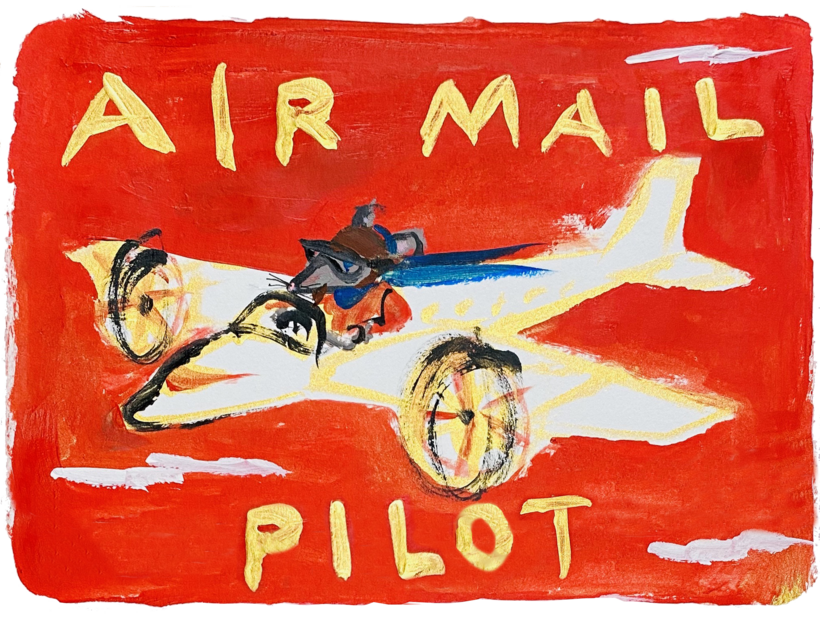Top Dog

Earlier this year Dexter’s police career was in tatters. Having flunked his training as an elite sniffer dog for being “too sociable”, the black labrador was expected to leave the force. Now, months later, he has earned a place in Scotland Yard’s history books and even been given an audience with Dame Cressida Dick, the Metropolitan Police commissioner. Dexter, who lacked focus and was too “gregarious” to make the cut as a search dog, has become the force’s first “well-being dog”.
PC Mike Sheather, his handler, is an experienced frontline officer with specialist mental health and trauma training who takes Dexter to meet officers and staff ranging from counterterrorism and firearms units to neighborhood bobbies. “He was destined to be a drugs dog. Unfortunately for them, and fortunately for us, he didn’t make it,” PC Sheather said.
Dexter flunked his training as an elite sniffer dog for being “too sociable.”
“He’s got a really good nose on him, it’s just that his personality didn’t lend itself to being a drugs dog. He’s just too good around people. He got withdrawn because he was too sociable. He also started to show signs of distress in training. If a dog isn’t settling or isn’t happy in their role it’s our duty to take them out. It was like one of my old school reports — lacked focus, immature, concentration issues. They actually used the word gregarious.”
PC Sheather came up with the idea of using Dexter as a well-being dog while speaking about the labrador to a colleague in a pub garden. Inspired by the use of combat stress dogs in the US army, Dexter’s effect — evidenced by his ability to bring a smile to the face of the most gnarled detective or beat cop — is actually supported by research. Studies have found that interactions with pets, such as stroking a dog, help to release oxytocin in humans, which has been referred to as the love hormone or the cuddle chemical.

Importantly for PC Sheather, oxytocin helps to balance out cortisol, the hormone associated with stress. During the first wave of the virus in May he took Dexter to meet police members of the pandemic multi-agency response team (Pmart), many of whom had been given the task of sitting with dead bodies having been moved from office-based roles. “They were going into the community, recording ‘life extinct’ and preparing the bodies for collecting,” he said.
At first, PC Sheather and a colleague had taken dogs from the training school to the Pmart hubs. “We saw firsthand how successful dogs are at raising morale,” he said. “They had been doing it for two or three months when I took Dexter around.” At Lewisham police station in south London last week Dexter chased tennis balls around the room while his handler gave officers a presentation on stress, trauma and how to seek support.
Studies have found that interactions with pets, such as stroking a dog, help to release oxytocin in humans.
PC Sheather, who has served in the Met’s territorial support group — units often called on to assist in serious cases of violence and disorder — received a commendation in 2011 after he and his partner confronted a gunman. His partner was shot and wounded but PC Sheather and his German shepherd, Boz, chased and detained the suspect. “I still blame myself for letting him [my partner] get in front,” PC Sheather said. “The dog handler should always be in front.” He chose to become more heavily involved with mental health support in policing after personal grief and loss was compounded by being sent to bleak crime scenes. He referred to his past depression using the phrase coined by Sir Winston Churchill: “the black dog”.
He and Dexter have been such a success that the program will be extended. There are also discussions about appointing an officer as the national lead for well-being dogs. Although some have dogs on their well-being schemes, no other force has a serving officer running a scheme like the Met’s and Dexter is now considered the “gold standard”, PC Sheather said.
As the presentation came to an end and Dexter vanished into an evidence room, it was obvious that the black dog in PC Sheather’s life was of a rather less menacing kind.
Sealed the Deal

Rocks That Don’t Roll

“Zen stones” that rest on slender ice pedestals have returned to Lake Baikal in Siberia, four years after they took the Internet by storm. Images of the precariously balanced pebbles first circulated on social media when Olga Zima won a photography contest with them.
How the stones come to be perched above the surface of the lake is unclear. It is thought that heat from the sun warming them may have combined with wind erosion. Some social media users in Russia have speculated that the balancing rocks were created with Photoshop. But Yelena Vtorushina, a photographer from Ulan-Ude, a city near the lake, has captured similar images and insists that they are real. She said that she believed high winds brought the stones onto the frozen lake and then sculpted the surrounding ice. Some of the stones were photographed near the mouth of the Sarminskoye gorge, which channels strong winds on to Baikal.

The rocks stand on pedestals surrounded by a shallow trough which does not extend far beyond the limits of the stone. A tweet about the “incredible frozen, near-impossible structures” last week called them the “Baikal Zen phenomenon” and was liked 175,000 times.
Baikal, the world’s biggest freshwater lake, is covered in thick ice for five months of the year, allowing people and cars to cross it. Locals say that stones also get onto the ice because people like to throw them and watch them glide far across the surface.

